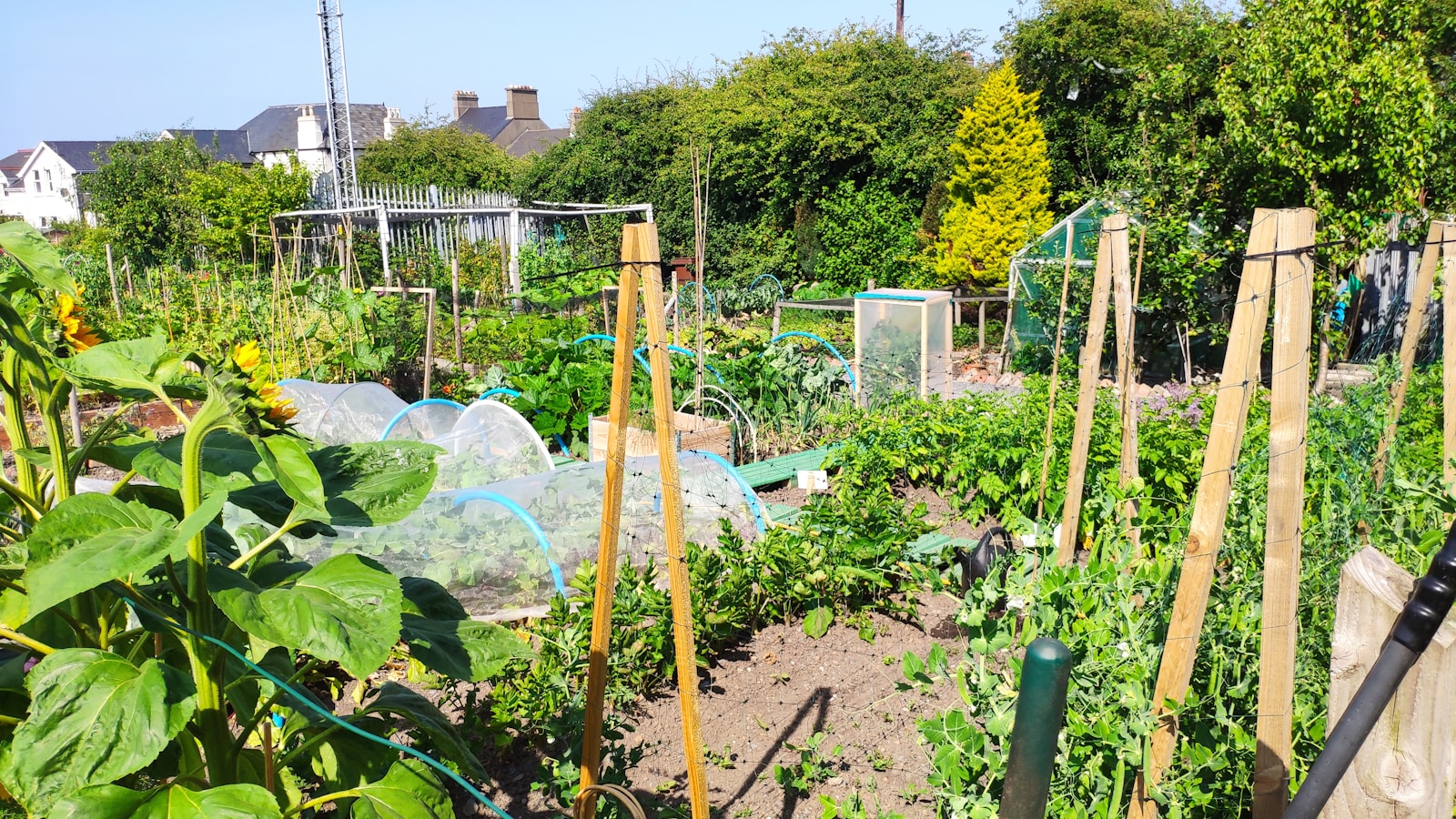In the dense, sprawling tapestry of modern cities, where concrete often dominates over greenery, community gardens and urban farming initiatives are sprouting as vibrant havens. More than just spaces for cultivating food, these green oases are profoundly impacting urban landscapes by growing food and growing communities simultaneously. They represent a powerful, grassroots movement towards local food security, environmental sustainability, and enhanced social cohesion, demonstrating how intentional greening can transform urban life.
The most direct and tangible benefit of community gardens and urban farming is their contribution to food security and healthier eating habits. In many urban areas, particularly in “food deserts” where access to fresh, affordable, and nutritious produce is limited, these gardens provide a vital local food source. Residents can grow their own fruits, vegetables, and herbs, directly reducing their reliance on expensive, often less healthy, supermarket options. This direct access to fresh produce not only improves nutritional intake but also empowers individuals and families to take control of their food supply, fostering a deeper connection to the food they consume. Educational opportunities within these gardens also teach participants about sustainable cultivation, soil health, and organic farming practices, transforming consumers into active participants in the food system.
Beyond the plate, community gardens and urban farming yield significant environmental benefits. By bringing food production closer to consumption, they dramatically reduce “food miles,” thereby cutting down on transportation-related carbon emissions and fossil fuel consumption. These green spaces act as urban lungs, improving air quality by absorbing pollutants and producing oxygen. They help mitigate the “urban heat island effect” by cooling surrounding areas through evapotranspiration. Furthermore, they contribute to biodiversity by providing habitats for pollinators like bees and butterflies, essential for both the garden’s productivity and the wider urban ecosystem. Many urban farms also integrate sustainable practices like composting organic waste, diverting it from landfills and enriching the soil, thus creating closed-loop systems that minimize environmental impact.
Crucially, urban gardens are powerful catalysts for community building and social cohesion. They create shared open spaces where people from diverse backgrounds, ages, and cultures can come together to work towards a common goal. The act of collective gardening fosters interaction, shared learning, and mutual support, leading to the development of strong social networks and friendships. This social connection combats feelings of isolation and loneliness often prevalent in urban environments, enhancing overall mental well-being. Studies show that community gardeners often report higher levels of subjective well-being compared to individual gardeners, underscoring the social benefits of shared green spaces. These gardens also serve as educational hubs, hosting workshops, gardening classes, and volunteer opportunities that strengthen community ties and civic engagement. They can revitalize neglected or vacant lots, transforming them into vibrant, productive assets that improve the aesthetics and safety of neighborhoods.
While the potential is immense, urban farming and community gardens do face challenges. These include securing access to suitable land, navigating complex zoning regulations, ensuring access to water, and overcoming initial investment costs for infrastructure and tools. Sustaining long-term engagement and preventing volunteer burnout also require effective management and community leadership. However, the solutions often lie within the very communities these gardens serve: strong local leadership, collaborative fundraising, partnerships with local governments and non-profits, and educational programs to build gardening capacity. Innovations like vertical farming, hydroponics, and rooftop gardens are also maximizing food production in limited urban spaces, offering scalable solutions for future growth.
In essence, community gardens and urban farming are more than just places to grow vegetables; they are vital urban infrastructure that nurtures both the environment and the human spirit. They are living laboratories for sustainability, powerful engines for social justice, and vibrant spaces where cities can reconnect with nature, themselves, and each other. By investing in and nurturing these green initiatives, we are not just growing food, but cultivating healthier, happier, and more resilient urban communities for generations to come.
References:
- Alveole Buzz – 6 reasons to install an urban garden on your commercial property: Discusses a range of benefits including environmental sustainability, aesthetic value, positive health impacts, fresh local food, and community engagement. https://www.alveole.buzz/blog/benefits-of-urban-gardens/
- One New Humanity CDC – The Benefits of Community Gardens: Provides an overview of benefits including physical and mental health, food security, economic benefits, social connection, and environmental benefits. https://www.onenewhumanitycdc.org/blog/the-benefits-of-community-gardens
- Emission Index – 11 Benefits Of Urban Agriculture (With 5 Stunning Examples): Focuses on environmental benefits like reduced emissions, preserving biodiversity, reduced food miles, and water conservation. https://www.emission-index.com/carbon-footprint/urban-agriculture-benefits
- Agritecture – Can Community Gardens Weaken Food Insecurity Issues?: Explores how community gardens contribute to food security by providing access to fresh food and empowering communities. https://www.agritecture.com/blog/community-gardens-and-food-insecurity
- Farmonaut – Urban Farming Solutions: 7 Powerful Techniques For Cities: Discusses various urban farming methods and highlights challenges and solutions, including policy support and education. https://farmonaut.com/blogs/urban-farming-7-powerful-ways-cities-boost-sustainability
- Sustainability Directory (Lifestyle) – How Do Urban Farms Affect Mental Health?: Delves into the deeper psychological and social mechanisms by which urban farms improve mental health, including stress reduction and fostering social connections. https://lifestyle.sustainability-directory.com/question/how-do-urban-farms-affect-mental-health/
- MDPI – Urban Green Spaces and Collective Housing: Spatial Patterns and Ecosystem Services for Sustainable Residential Development: Discusses the role of urban green spaces in enhancing quality of life, environmental benefits, and socio-economic attributes. https://www.mdpi.com/2071-1050/17/6/2538
- ResearchGate – Community-based urban agriculture for food justice: a review: Discusses community-led urban agriculture projects and their role in food justice, social links, and sustainable growth. https://www.researchgate.net/publication/366920880_Community-based_urban_agriculture_for_food_justice_a_review


